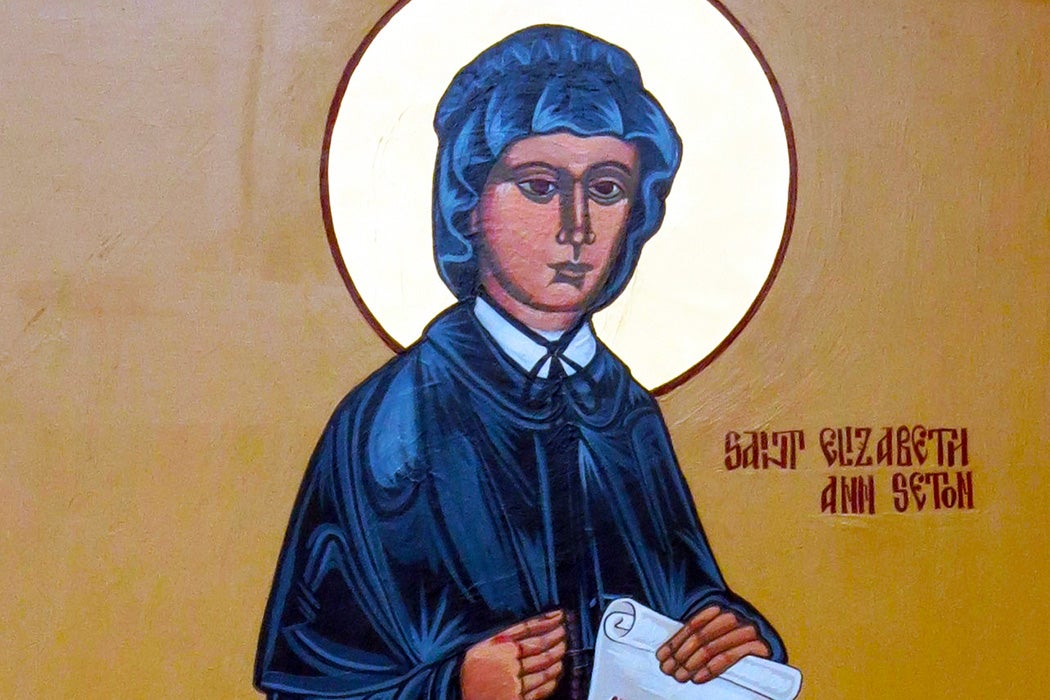Elizabeth Ann Seton, who died on January 4, 1821, is today known as the first American Roman Catholic canonized saint.
Born into the family of a wealthy New York physician, Seton was married and had five children, becoming a widow after her husband died during a trip to Italy in 1803. She became inspired by the Italian faith and culture and, upon returning to New York, converted to Catholicism in 1809.
Shunned by New York society because of her religious conversion, she moved to Baltimore, then the unofficial capital of the Catholic United States, where she used her wealth to begin a community of women called the Sisters of Charity. Seton is credited with developing early Catholic school education in the United States. Upon her death, she was hailed for her sanctity and her outreach to the poor and uneducated. Still, her road to canonization was no easy path.
Historian Kathleen Sprows Cummings charts how the canonization process reflected many of the currents underway in the wider American and church culture. In previous centuries, saints would be proclaimed by acclamation, a process by which the sanctity of a particularly pious person would be honored through informal consensus, which would then be ratified by a pope. But in 1634, a centralizing process that necessitated evidence of “heroic holiness”—including evidence required of miraculous healings and the intervention of a “devil’s advocate” to argue against canonization—made the process of saintmaking more complicated. The process often became mired in political and cultural currents, and tended to favor European saints, who were closer to the Vatican worldview.
According to Cummings, the ebbs and flows of Seton’s canonization process reflect how Irish immigrant Catholics responded to nineteenth-century caricatures of their culture in the largely Protestant United States. For example, even the suffragist movement argued that women’s rights to vote would offset the growth of foreign, mainly Irish Catholic, men who could not be trusted to vote intelligently.
The Seton canonization cause was formally taken up in 1907 by the U.S. bishops. Catholics, hungry for inclusion into the wider culture, saw Seton as a way to buttress their American status. After all, Seton was truly American, connected by birth to prestigious families including the Roosevelts. And in 1814, her sisters assisted victims of the yellow fever epidemic in Philadelphia, establishing their family’s charitable outreach beyond Catholics.
There was competition in the race to be honored as the first American-born saint. Most notably, Seton was challenged by Kateri Tekakwitha, the Lily of the Mohawks, a Native American persecuted for her faith in upstate New York. But Kateri’s cause began to fade because the process favored religious congregations such as the Sisters of Charity, who had the resources and structure to continue the painstaking cause, which included the submission of volumes of evidence to the Vatican arguing for canonization.
Ironically, much of the social context that contributed to the Seton cause had changed by the time she was finally canonized in 1975. The election of John F. Kennedy fifteen years before had solidified the role of Catholics in American life, and the most virulent forms of anti-Irish bigotry had long been consigned to the dustbin of history.
Tekakwitha reached canonization in 2012, propelled by Native American interest and by the intervention of Pope John Paul II.
Now more Americans are being considered for sainthood, including Dorothy Day, the social activist and founder of the Catholic Worker, whose cause is now in process. Thanks to Elizabeth Ann Seton, and the particular cultural and historical currents that propelled her canonization process, to be an American and a canonized saint is now possible and, increasingly, expected.
Editor’s Note: The initial version of this post claimed Kateri Tekakwitha was martyred for her faith. Instead, she died of natural causes. Since publication, we have capitalized the word “her” in the subheading.







